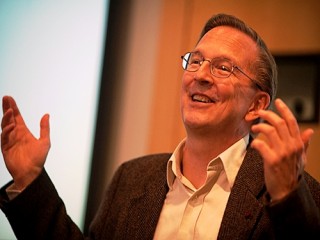
Jack W. Szostak biography
Date of birth : 1952-11-09
Date of death : -
Birthplace : London, England
Nationality : British
Category : Science and Technology
Last modified : 2011-09-21
Credited as : biochemist, geneticist, Nobel Prize for Physiology or Medicine
0 votes so far
Szostak grew up in Montreal and Ottawa. Although Szostak does not speak Polish, he stated in an interview with Wprost weekly that he remembers his Polish roots. He attended Riverdale High School (Quebec) and graduated at the age of 15 with the scholars prize. He graduated with a B.Sc in cell biology from McGill University at the age of 19. In 1970, as an undergraduate, he participated in The Jackson Laboratory's Summer Student Program under the mentorship of Dr. Chen K. Chai. He completed his PhD in biochemistry at Cornell University (advisor Prof. Ray Wu) before moving to Harvard Medical School to start his own lab at the Sydney Farber Cancer Institute. He credits Ruth Sager for giving him his job there when he had little yet to show. In 1984 Howard Goodman lured him away to Massachusetts General Hospital and the Department of Molecular Biology. He was granted tenure and a full professorship at Harvard Medical School in 1988.
Szostak has made contributions to the field of genetics. He is credited with the construction of the world's first yeast artificial chromosome. That achievement helped scientists to map the location of genes in mammals and to develop techniques for manipulating genes. His achievements in this area are also instrumental to the Human Genome Project.
His discoveries have helped to clarify the events that lead to chromosomal recombination-the reshuffling of genes that occurs during meiosis-and the function of telomeres, the specialized DNA sequences at the tips of chromosomes.
Currently, his lab focuses on the challenges of understanding the origin of life on Earth, and the construction of artificial cellular life in the laboratory.
Awards and honors:
National Research Council of Canada 1978
Massachusetts General Hospital (1984-present)
National Science Foundation
National Institutes of Health
National Research Council
Dana-Farber Cancer Institute
Chemistry and Biology Journal Editorial Board (1994-present)
Howard Hughes Medical Institute Investigator (1998-present)
National Academy of Sciences 1998
American Academy of Arts and Sciences
New York Academy of Sciences 1999
National Academy of Sciences Award in Molecular Biology 1984
Genetics Society of America Medal 2000
Heineken Prize for Medicine 2008
Lasker Award 2006 (with Elizabeth H. Blackburn and Carol W. Greider)
Nobel Prize for Medicine 2009 (with Elizabeth H. Blackburn and Carol W. Greider)
















